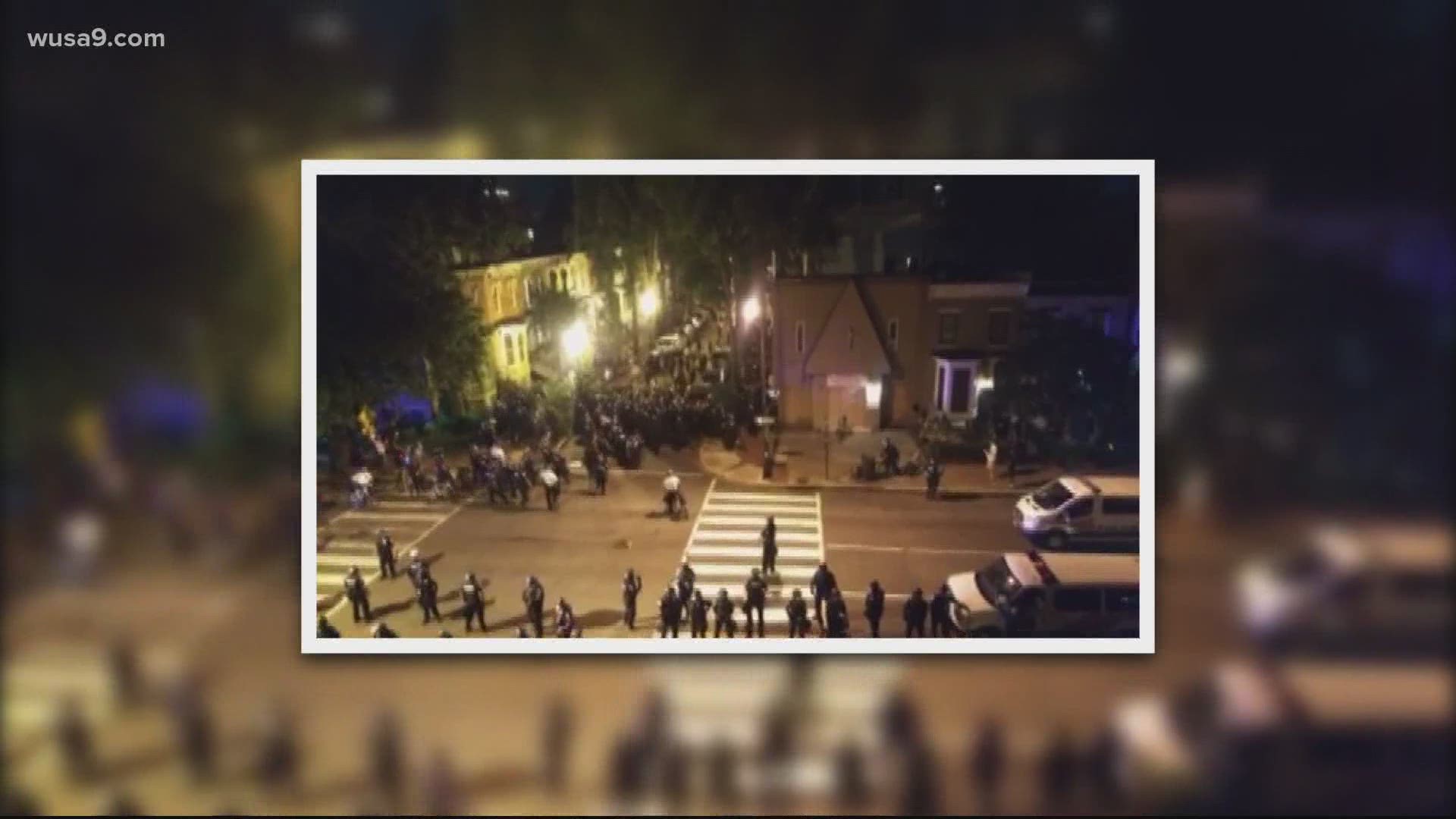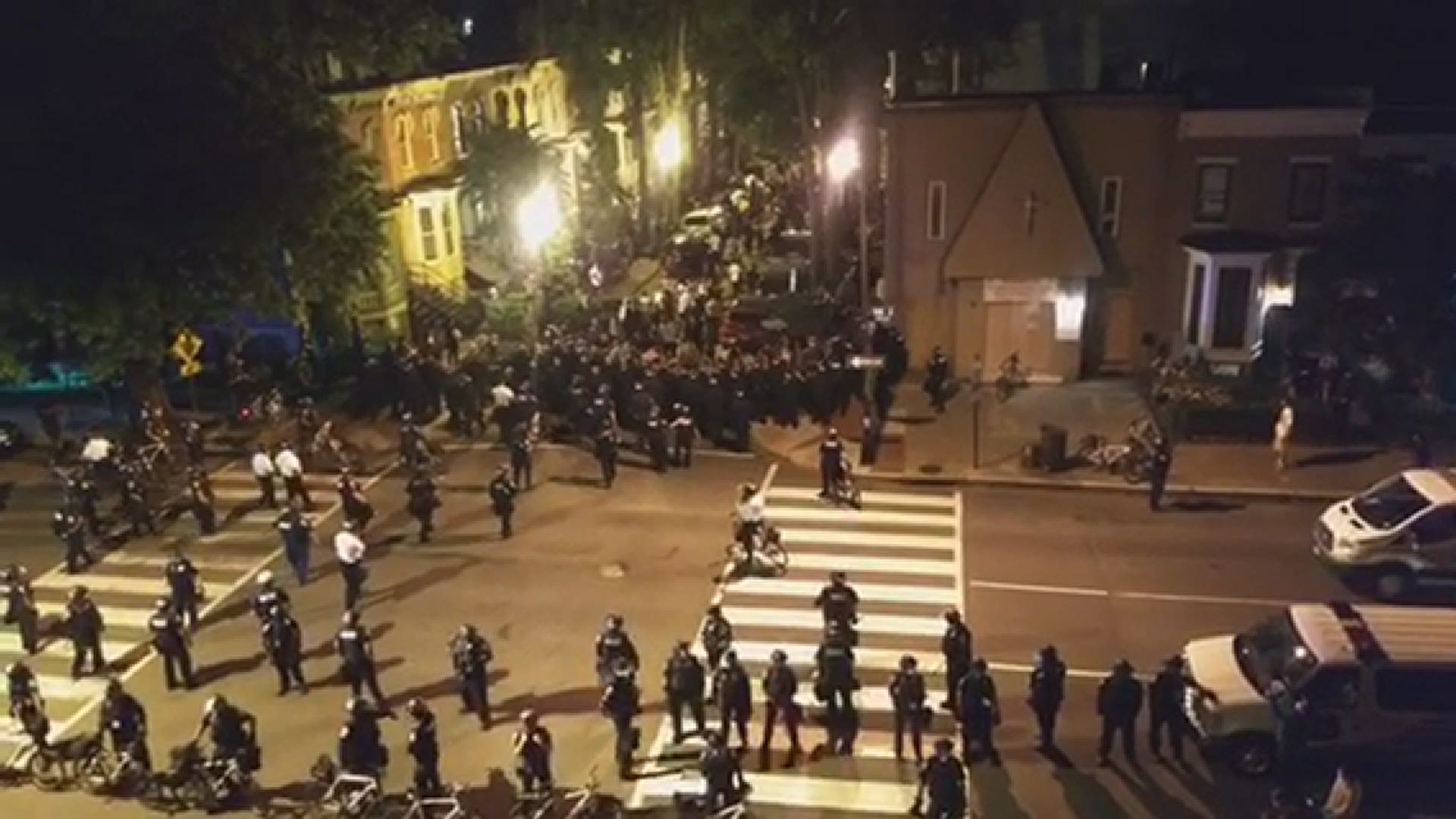WASHINGTON — Logan Circle resident Rahul Dubey has received a lot of praise for opening his home to protesters fleeing arrest after the curfew went into effect on Monday night.
Dubey lives on 15th and Swann street in Northwest. On Monday, during what neighbors describe as a peaceful protest, 200 were arrested in the area by D.C. Police.
60 more protesters were able to seek shelter in Dubey's home.
Both Dubey and the protesters who stay with him say D.C. Police sprayed pepper spray into the home, through the window, while they were inside.
On social media, many protesters have called into question the police department's use of chemical agents like pepper spray and aggressive military tactics.
The incident on Swann St. received a lot of that attention.
One Swann street couple, who had a birds-eye view of the night, gave WUSA9 exclusive video that shows exactly how D.C. Police used military tactics to pin protesters into Swann St., which lead to 200 arrests.
"You could see a very clear strategy by the police to corral the protesters because the police were coming from all directions, Logan Circle resident Julian Hunt said. "They were running down Swann St. They had blocked the protesters on S St. They were pushing them down 15th St. And they all converged on this corner."
"From Argentina, I know exactly the strategy of the police, his wife Lucrecia told WUSA9. "When they try to…you say.. box in."
The Hunts live on the corner of 15th and Swann St. in NW.
On Monday night, when the stand-off between D.C. Police and protesters started to escalate -- they had a front-row seat.
"These kids were 20-30 and I tell you they were not aggressive," Lucrecia said. "There was no violence at all."



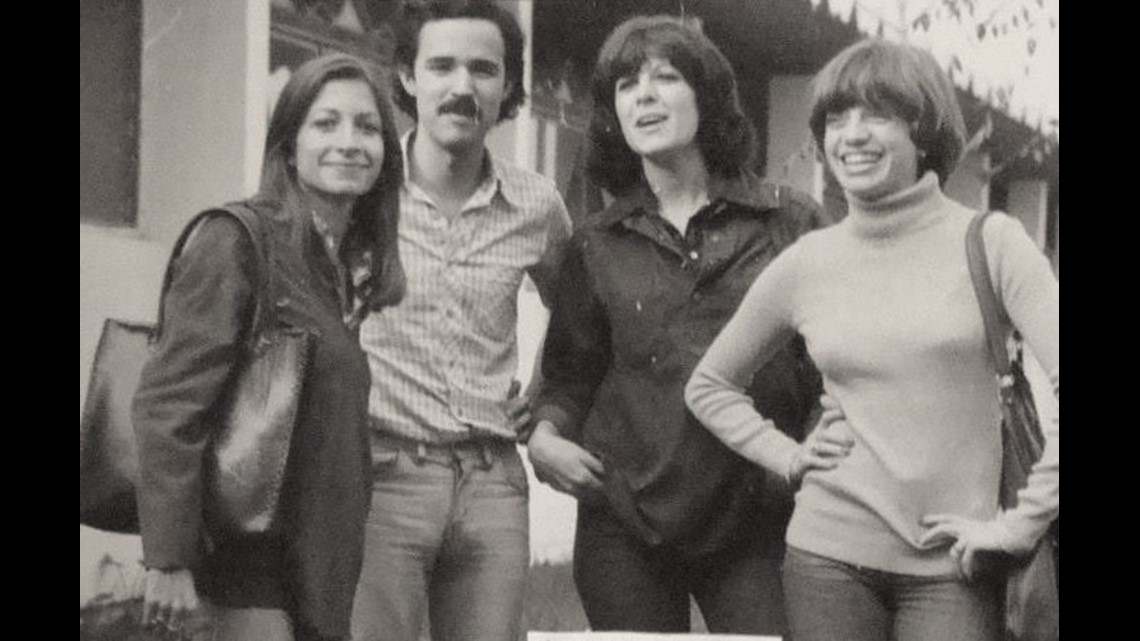
Since her late teens, Lucrecia remembers when she had to protest her the government in Argentina. She respects and supports the peaceful protest that she saw on her street that night.
But Chief Newsham said there was a reason for the department's response.
"A couple of days ago we were monitoring a group that was exhibiting behaviors that were consistent with the behavior that preceded very violent events," Newsham said.
Julian told WUSA9, there was a stand-off.
"And I have to say, the police were fairly restrained, and the protesters were very peaceful, but it was a stand-off. And it was quite a long time," Julian said.
Restrained – it’s the same word Newsham used to describe the actions of his officers that night.
"The level of judgment and restraint that our police showed...I think it is something at the end of the day that we will look back on and be proud of our agency for doing," Newsham said.
The exclusive video obtained by WUSA9 shows the moment police began chanting at the protesters: "Move it back. Move it back."
That’s when Julian and Lucrecia say the interaction between the police and protesters took a turn.
A turn that reminded Lucrecia of growing up in Argentina during the military coup by ‘La Junta’ in the 60s.
"I mean you immediately associate…you know…to the worst times of your life," Lucrecia said. "I lived that through my country and I can see it’s not necessary."

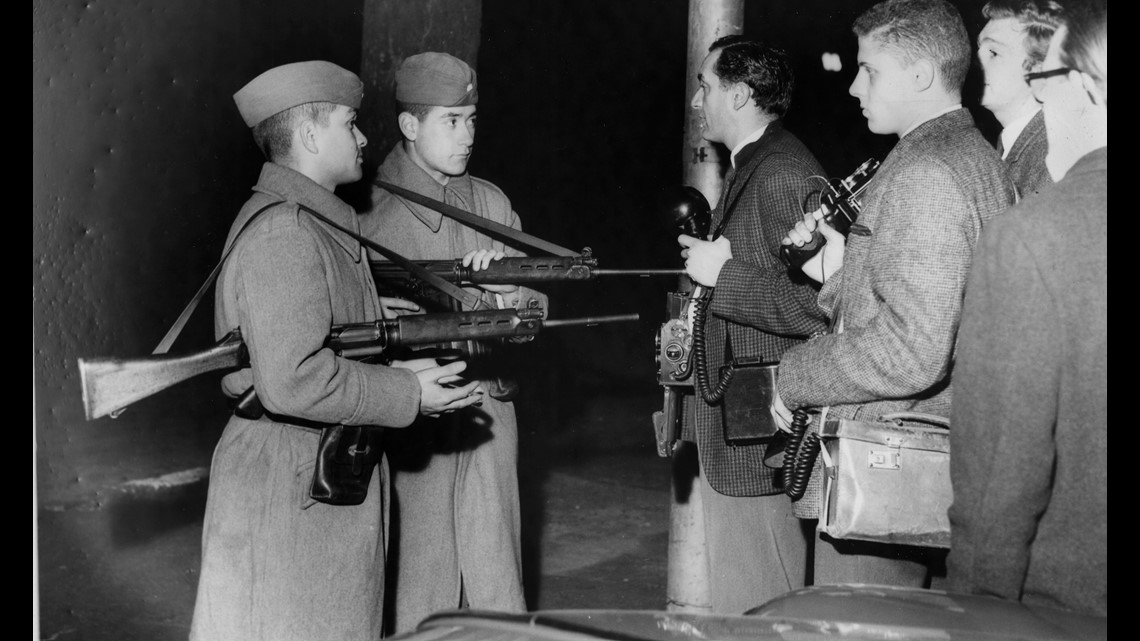

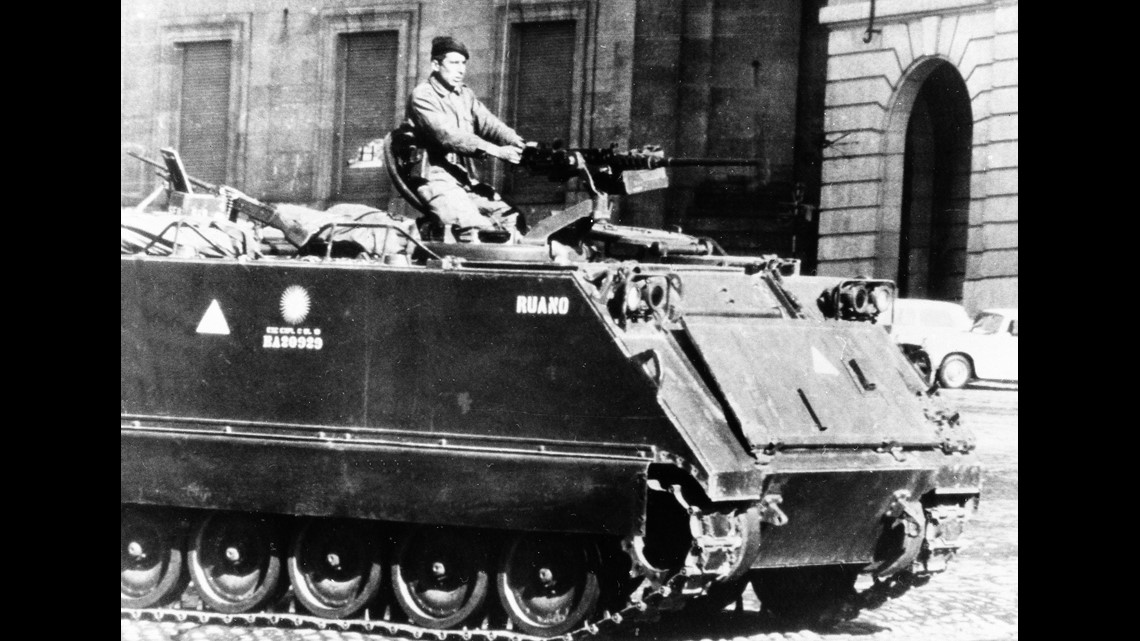
On Thursday WUSA9 spoke with Retired Army Major Mike Lyons about the strategies used by D.C. Police. We asked him if he felt, as a military strategist, if they were out of line.
"If you look at what had happened there," Lyons said. "The police used classic military strategies that are used in urban warfare. But if you look in history in most cases you don’t see that unless there’s real unrest that exists in the country."
DC Council announced Wednesday they plan to conduct oversight of incidents that occurred on Swann St. that may have caused the rights of the protesters to be violated.
The committee is now asking people who were there to come forward and share their experiences with committee members at Judiciary@DCCouncil.us
Thursday, Councilmember Breanne Nadeau introduced a bill to ban the use of chemical irritants like tear gas by D.C. Police at protests where people are expressing their first amendment right.
While the District cannot make the same mandate of federal agencies, the bill directs the Mayor to communicate this policy to any agency operating in the District of Columbia.

